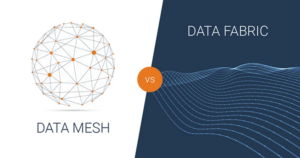Cybersecurity Response: An All-Hands-On-Deck Approach
In today’s hyper-connected world, cybersecurity threats are no longer just an IT problem. A successful response to a cyberattack requires a coordinated effort across the entire organization.
Why is a Whole-Organization Approach Crucial?
- Rapid Detection: Employees are often the first line of defense. They may notice suspicious emails, unusual activity on their devices, or unexpected system behavior. A well-informed workforce can quickly report these incidents, enabling faster response times.
- Minimizing Impact: A swift response is crucial to minimize the impact of a cyberattack. This includes limiting data exposure, restoring systems, and maintaining business continuity. Every department plays a role in this process, from IT and security to legal, communications, and human resources.
- Maintaining Customer Trust: A cyberattack can severely damage a company’s reputation and erode customer trust. Effective communication and transparency, involving employees from various departments, are essential in mitigating the impact on brand image and customer relationships.
- Ensuring Business Continuity: A robust response plan ensures that critical business operations can continue with minimal disruption following a cyberattack. This requires collaboration between IT, operations, and other departments to maintain essential services and ensure business continuity.
Key Roles for Departments Beyond IT:
- Human Resources: Responsible for employee training and awareness programs, handling employee communication during and after an incident, and managing employee data privacy.
- Legal: Provides legal guidance on data breach notification laws, legal discovery, and potential litigation.
- Communications: Develops and disseminates clear and concise communication messages to employees, customers, and stakeholders.
- Operations: Assists in maintaining business continuity, ensuring critical operations can continue during and after an incident.
Building an Effective Cybersecurity Response Plan:
- Develop clear roles and responsibilities: Define the roles and responsibilities of each department in the event of a cyberattack.
- Conduct regular training and drills: Train employees on how to recognize and report suspicious activity, and conduct regular drills to test the incident response plan.
- Establish clear communication channels: Ensure that all departments have access to clear and timely communication channels during an incident.
- Regularly review and update the plan: The threat landscape is constantly evolving. Regularly review and update the plan to ensure its effectiveness.
By fostering a culture of cybersecurity awareness and involving all departments in the response planning process, organizations can significantly improve their ability to effectively respond to and recover from cyberattacks.
Disclaimer: This blog post is for informational purposes only and does not constitute financial, investment, or legal advice.
Read more

Application Management Experience Prepares Future Leaders
Experience in application management – often seen as a technical niche – provides a powerful foundation for essential leadership skills.

Audit Your Apps: Governance and End of Life (EOL) Plans Are Crucial
You’re juggling multiple priorities, and application and application lifecycle management (ALM) programs should be top on that list.

Data Fabric: The Future of Data Management for Growing Businesses
Data Fabric is a revolutionary architectural approach that promises to transform how organizations access, integrate, and utilize their data.
